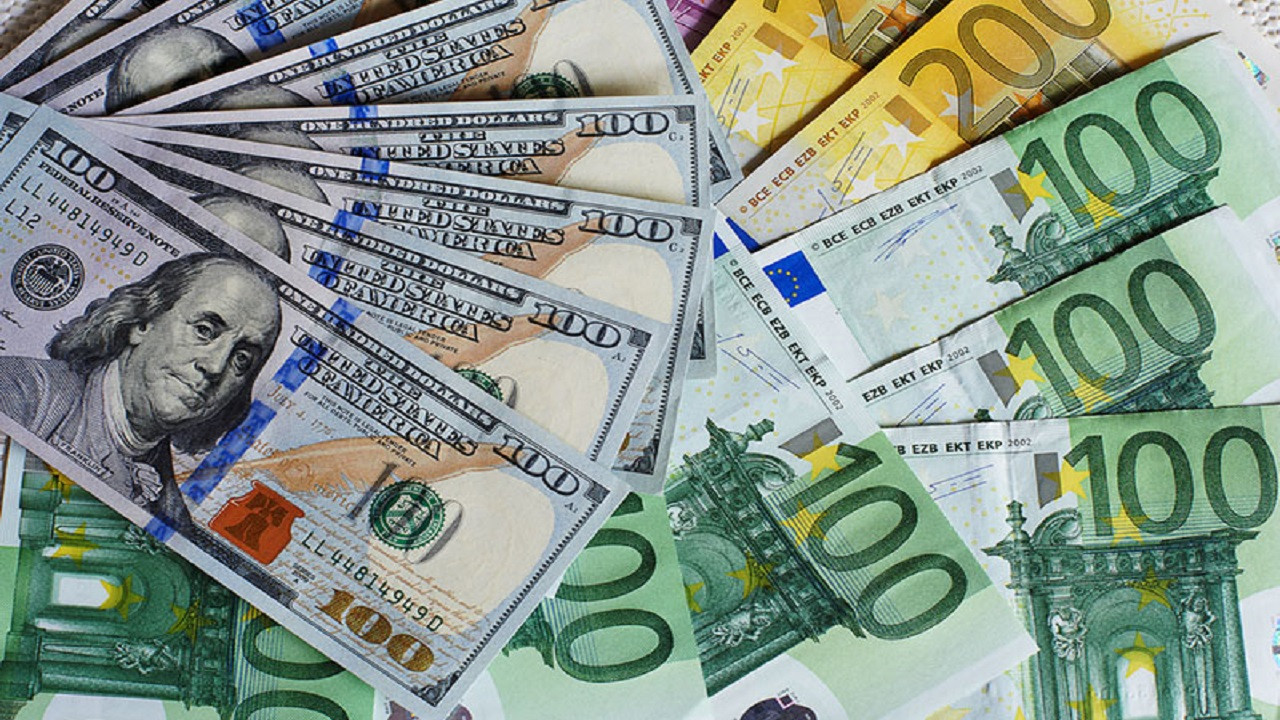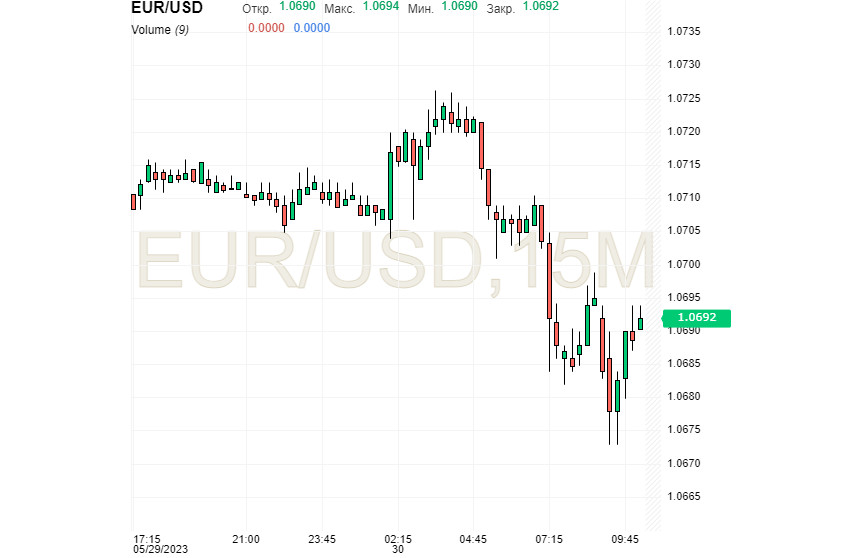
The US debt ceiling deal has lifted risk appetite in the market. The US dollar eased, while the euro stayed subdued as well, unable to develop momentum and win back its early losses. At the same time, the greenback is persistently looking for ways out of the downward spiral.
In the current situation, it is difficult for the greenback to maneuver. At the beginning of the week, the US currency showed a short-term weakening as the deal on the ceiling of the US government debt strengthened investors' risk appetite. However, the European currency couldn't advance much as it was pressured by mixed macroeconomic data.
One of the key events for the market remains the fact that the US debt ceiling was raised once again. A final decision on this issue is expected in the near future. Earlier, US President Joe Biden announced an agreement on the national debt ceiling with Kevin McCarthy, speaker of the US House of Representatives. This measure is necessary to avoid default in the country, Joe Biden stressed.
In a situation of uncertainty due to the risk of default, market participants expect another change in the key rate at the Fed's June meeting. Most analysts (60%) predict a 25-basis-point increase. Today, the key rate in the US stands at 5%–5.25%.
According to experts, the probability of raising the Fed rate by 25 basis points in June rose significantly after the publication of the PCE data. According to the US Bureau of Economic Analysis, in April, the core index of personal consumption expenditure (PCE), which the Fed is guided by when assessing inflation, increased to 4.7% in annual terms.
Against this background, the greenback managed to maintain stability against other currencies, primarily against the euro. However, this situation holds back the growth of the EUR/USD pair, limiting its upward movement. So, the dynamic of both currencies is extremely unstable. Early on Tuesday, May 30, the EUR/USD pair was trading at 1.0692, struggling to break through to new highs.

USD and EUR started the new week at two-month lows but were still trying to recoup losses. The European currency fell to its lowest level against the dollar since March 2023. Against this background, analysts fear a further decline in the EUR/USD pair to a critical level of 1.0600 and below.
Negative sentiment was provoked by a long decline in the euro in May. Currency strategists at Scotiabank believe that in such a situation, the ECB could take "at least two rate hikes." This year, market participants also expect the regulator to double the interest rate.
The dynamics of the US currency and the state of the US economy have a significant impact on the European economy and the level of inflation in the eurozone. Despite the fact that many countries have embarked on de-dollarization, the greenback continues to dominate international settlements. Trade relations between the US and Europe are still strong, experts emphasize. The economic influence of the US on European and other countries is difficult to overestimate.
Earlier, in 2022, the ECB tried to take a different path than the Fed, intending to keep the key rate low. For your reference, a year ago, the Fed began its aggressive monetary tightening. However, the divergence in monetary policies weakened the euro against the dollar. As a result, ECB officials had to change course, fearing imported inflation due to such commodities as energy which is valued in dollars.
According to current research, the Fed's interest rate hike affects the European economy just as much as it does the US economy. Therefore, the ECB is closely monitoring the actions of the Fed and the dynamics of the EUR/USD pair. Further macroeconomic statistics from the US, which will be published on Friday, June 2, will determine the trajectory of the pair. According to preliminary forecasts, the unemployment rate in the country increased to 3.5% in May from the previous 3.4% in April. At the same time, the number of jobs in the non-agricultural sector of the American economy increased by 195,000. A month earlier, the reading was 253,000.
There is currently a risk of further interest rate hikes by the Fed this year. Such a scenario will be in favor of the US dollar. However, the single European currency can also benefit from this if the data on inflation in the eurozone is similar to reports on the British economy. According to the report published last week, inflation in the UK accelerated significantly, although it was expected to decline.
Earlier, a noticeable increase in the consumer price index in the UK provoked a fall in the GBP/USD pair. Fears about an imminent recession caused by a prolonged tightening of interest rates by the Bank of England also contributed to the pair's decline. A similar situation is possible with the EUR/USD pair. Accelerating inflation in the euro area will push the instrument lower to the level of 1.0499 (61.8% Fibonacci).
Easing inflation in the EU may also dampen demand for the euro. In addition, the euro is still sensitive to fluctuations in the dollar and the dynamics of the US government bond market.
Fed's actions aimed at completing the tightening cycle undermine the position of the US dollar. Previously, the greenback was supported by hawkish statements by the regulator, but now its rhetoric has changed to dovish. Against this background, currency strategists at OCBC Bank expect USD sales to grow. The current situation implies limited opportunities for growth in the US dollar, bank analysts emphasize.
This view is shared by Wells Fargo economists, who expect the greenback to weaken slightly in the fourth quarter of 2023. However, over the next year, USD is likely to face more pressure, analysts are sure.
In the short term, the US currency will remain relatively stable as additional tightening of the Fed's monetary policy and some imbalance in the market will support the dollar. However, the greenback will come under pressure later on as the Fed begins easing its policy in early 2024. According to the Wells Fargo forecast, the US currency will weaken by 1.5% during 2023 and by 5% in 2024.





















